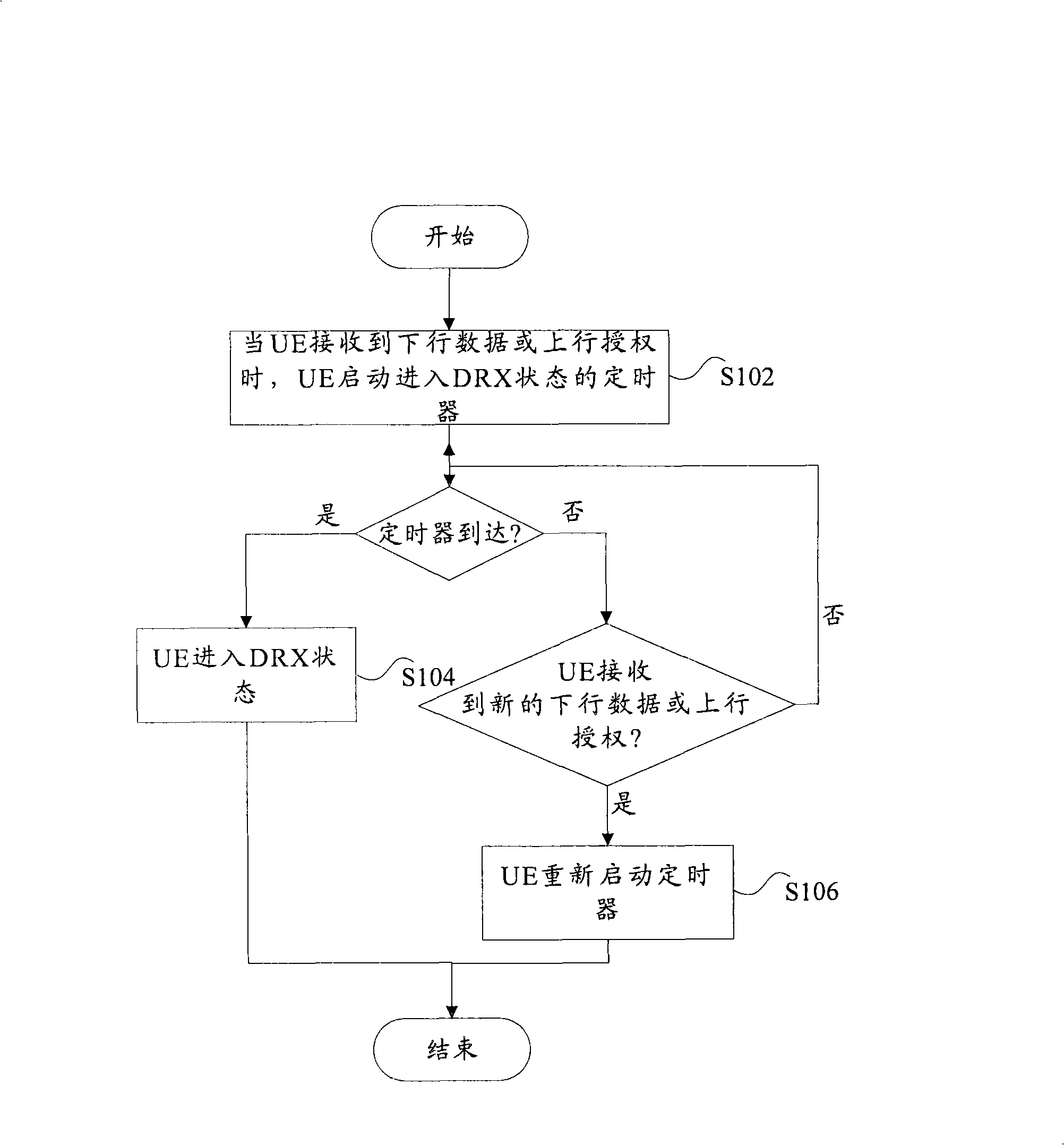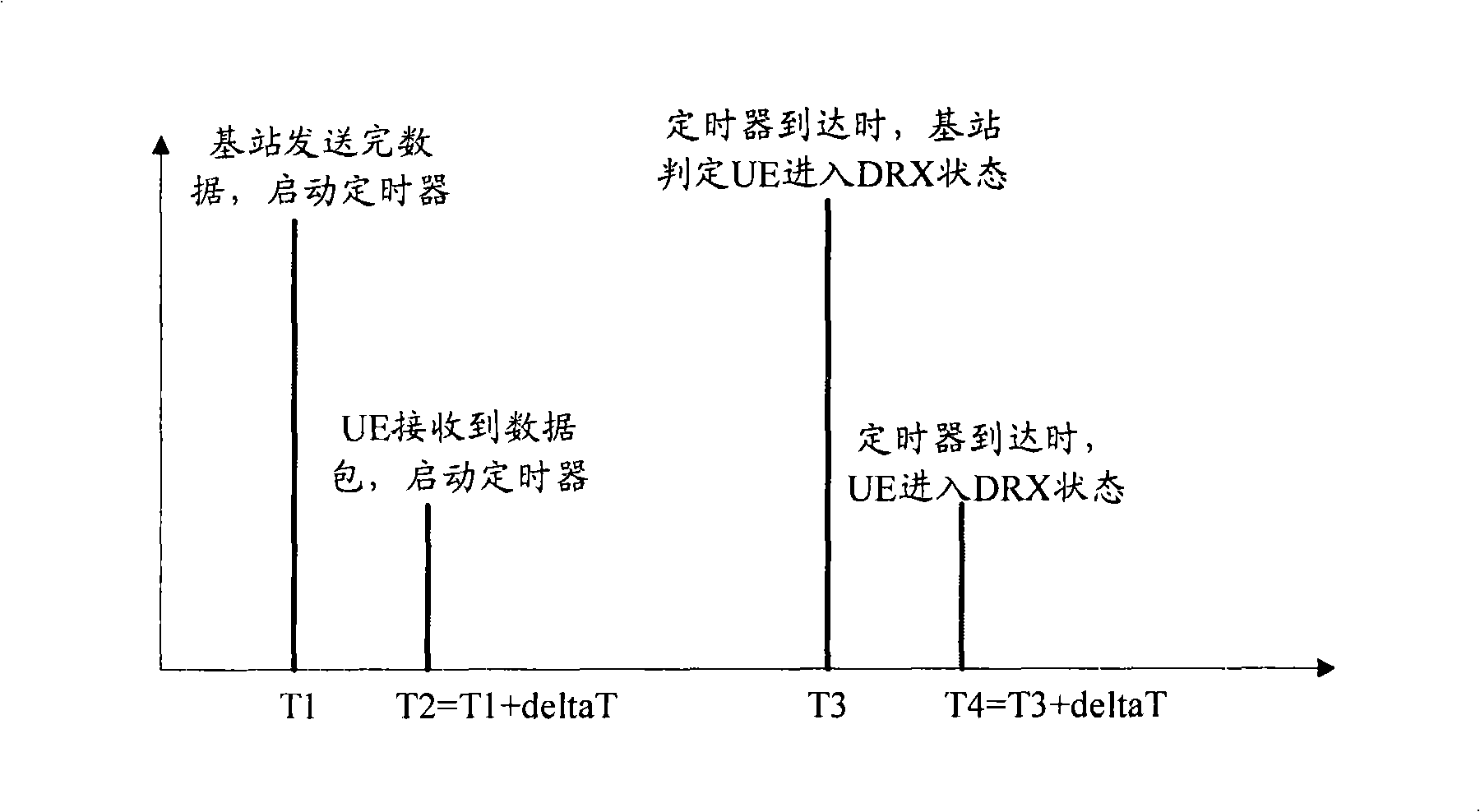Method for user's set entering into incontinuous receiving condition
A technology of user equipment and receiving status, applied in the field of communication, can solve problems such as unfavorable user equipment normal communication, unfavorable user data scheduling, etc., to achieve the effect of improving system capacity and saving system resources
- Summary
- Abstract
- Description
- Claims
- Application Information
AI Technical Summary
Problems solved by technology
Method used
Image
Examples
example 1
[0033] In this example, the following scenario is set, the UE sends NACK, but the base station receives ACK (correct response), then as Figure 4 As shown, the processing at each moment is as follows:
[0034] Time T1: After the base station sends the data, start the timer for the UE to enter the discontinuous reception state;
[0035] Time T2: UE receives the data packet sent by the base station, and the data packet is an error packet, then the UE starts the timer to enter the discontinuous reception state, and returns NACK to the base station at time T3, where the time T2 is relative to the time T1 Lag deltaT, deltaT is the transmission delay;
[0036] Time T4: The base station detects that the UE returns an ACK (that is, the base station receives the NACK as an ACK);
[0037] Time T5: When the base station detects that the timer for entering the discontinuous reception state arrives, it determines that the UE enters the discontinuous reception state;
[0038] Time T6: Wh...
example 2
[0040] In this example, the following scenario is set: UE sends ACK, but the base station receives NACK, then as Figure 5 As shown, the processing at each moment is as follows:
[0041]Time T1: After the base station sends the data, start the timer for the UE to enter the discontinuous reception state;
[0042] T2 moment: UE receives the data packet sent by the base station, and the data packet is a correct packet, then the UE starts the timer to enter the discontinuous reception state, and returns ACK to the base station at T3 moment, where T2 moment is relative to T1 moment Lag deltaT, deltaT is the transmission delay;
[0043] Time T4: The base station detects that the UE returns NACK (that is, the base station receives the ACK as NACK);
[0044] Time T5: The base station resends the data and starts the timer for discontinuous reception;
[0045] Time T6: UE receives the data sent by the base station, and restarts the timer to enter the discontinuous reception state;
...
example 3
[0049] In this example, the following scenario is set: the base station receives DTX (discontinuous transmission) as ACK, then as Figure 6 As shown, the processing at each moment is as follows:
[0050] Time T1: After the base station sends the data, start the timer for the UE to enter the discontinuous reception state;
[0051] T2 moment: UE receives the data packet sent by the base station, and the data packet is a correct packet, then the UE starts the timer to enter the discontinuous reception state, and returns ACK to the base station at T3 moment, where T2 moment is relative to T1 moment Lag deltaT, deltaT is the transmission delay;
[0052] Time T4: The base station detects that the UE returns an ACK and keeps the timer;
[0053] Time T5: The base station receives the ACK sent by the UE (receives the DTX error as an ACK), and keeps the timer;
[0054] Time T6: When the base station detects that the timer for entering the discontinuous reception state arrives, it det...
PUM
 Login to View More
Login to View More Abstract
Description
Claims
Application Information
 Login to View More
Login to View More - Generate Ideas
- Intellectual Property
- Life Sciences
- Materials
- Tech Scout
- Unparalleled Data Quality
- Higher Quality Content
- 60% Fewer Hallucinations
Browse by: Latest US Patents, China's latest patents, Technical Efficacy Thesaurus, Application Domain, Technology Topic, Popular Technical Reports.
© 2025 PatSnap. All rights reserved.Legal|Privacy policy|Modern Slavery Act Transparency Statement|Sitemap|About US| Contact US: help@patsnap.com



